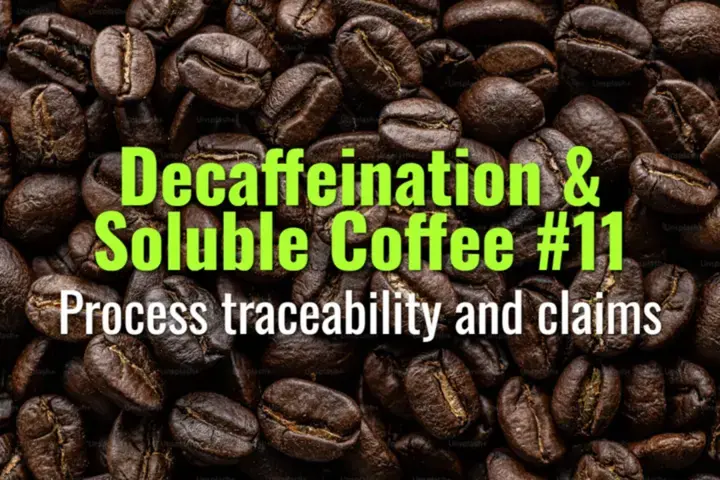Process traceability and claims
Why transparency in decaffeination processes matters, how traceability is ensured, and what claims roasters should communicate responsibly.
- Coffee Basics Nerds
- 2 min read
Article 11 of 12 in Decaffeination & Soluble Coffee/

Importance of Traceability
- Decaf coffee often raises consumer questions about safety, quality, and flavor integrity.
- Traceability builds trust by clearly stating which process was used (Swiss Water, CO₂, Sugarcane/EA, Methylene Chloride).
- Prevents misleading or vague labeling like “naturally decaffeinated” without specifics.
What Should Be Traced
- Origin Details: Farm, region, variety, processing method (washed, natural, etc.).
- Decaf Plant Location: Country and facility where decaffeination took place.
- Process Method: Transparent naming (e.g., “Swiss Water Decaf,” “Sugarcane EA Decaf”).
- Certifications: Organic, Fair Trade, Rainforest Alliance if applicable.
Common Claims and Their Accuracy
- “Chemical-Free Decaf” → Usually refers to Swiss Water, but should not be used for CO₂ (though it is solvent-free). Better term: “Solvent-Free.”
- “Natural Decaf” → Often used for sugarcane EA because EA is naturally occurring, but still involves solvent chemistry.
- “99.9% Caffeine-Free” → Accurate only if backed by lab testing; most standards are 97% removal.
Regulatory Context
- US FDA & EU Standards: Require ≤0.1% caffeine by dry weight for decaf labeling.
- Marketing Oversight: Misleading claims (e.g., “chemical-free” for solvent methods) may create liability.
Consumer Communication
- Provide clear, simple explanations:
- “This coffee was decaffeinated using the Swiss Water Process in Canada.”
- “Sugarcane EA decaf from Colombia—ethyl acetate derived from sugarcane fermentation.”
- Transparency helps specialty roasters differentiate their offerings.
Summary
Traceability in decaf means tracking origin, process, facility, and certifications. Responsible claims avoid vague or misleading terms like “natural” or “chemical-free,” instead focusing on clear, accurate process descriptions that build customer confidence.